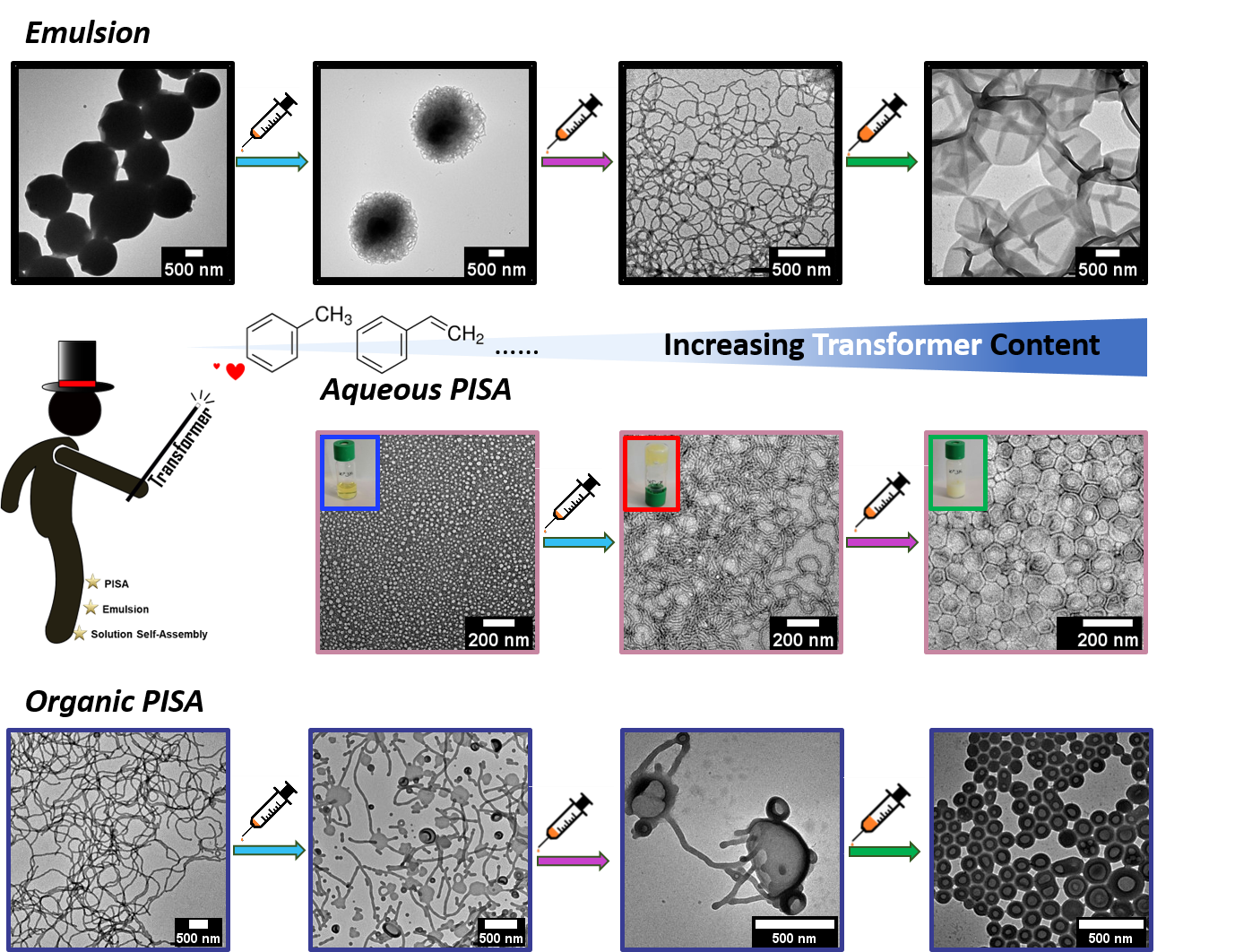Transformer-Induced Metamorphosis of Polymeric Nanoparticle Shape at Room Temperature
Controlled polymerizations have enabled the synthesis of a wide range of amphiphilic block copolymers which can form nanostructured materials with different shapes exhibiting distinct properties and performance.1 Despite the importance of shape, current strategies that allow for the efficient morphological transformation are limited in polymer scope, often alter the chemical structure, operate at high temperatures, and can be fairly tedious and time-consuming. Herein we present a rapid and versatile morphological transformation strategy which operates at ambient temperature and without impairing the chemical structure of the resulting morphologies. By simply adding a small amount of a molecular transformer (i.e. small organic molecule) in an aqueous solution of polymeric nanoparticles, a rapid evolution to the next high-ordered morphology was observed within seconds, yielding a range of nanoparticles morphology from the same starting material. Significantly, this approach can be applied to nanoparticles produced by disparate block copolymers (i.e. with different cores and coronae) obtained by various synthesis techniques, including emulsion polymerization, polymerization-induced self-assembly and traditional solution self-assembly.2,3

[2] M. Rolland, N. P. Truong, K. Parkatzidis, E. H. Pilkington, A. L. Torzynski, R. W. Style, E. R. Dufresne, and Athina Anastasaki, JACS Au, 2021, 1, 11, 1975–1986.
[3] K. Parkatzidis, N. P. Truong, M. Rolland, V. Lutz-Bueno, E. H. Pilkington, R. Mezzenga and A. Anastasaki, Angew. Chem.Int. Ed., 2022, e202113424.